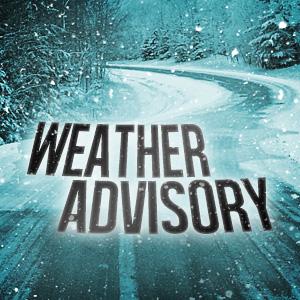Winter is coming—and with it, the familiar flurry of alerts, advisories, and warnings that can make or break your daily routine. While the first snowflakes haven’t fallen everywhere just yet, meteorologists are already sounding the alarm about what could be a particularly active season for parts of the U.S., especially the Midwest, Great Lakes, and Northeast. But what does a Winter Weather Advisory actually mean, and how should you prepare? Let’s break it down.
What Is a Winter Weather Advisory?
A
Winter Weather Advisory is issued by the National Weather Service (NWS) when winter conditions—like snow, sleet, or freezing rain—are expected to cause significant inconveniences and may be hazardous, but aren’t likely to be life-threatening if you’re cautious. Think of it as a heads-up: roads might be slick, sidewalks could get icy, and your morning commute could take longer than usual. It’s not as severe as a
Winter Storm Warning (which means dangerous, life-threatening conditions are imminent), but it’s still a signal to take precautions.
How Advisories Fit Into the Alert System
The NWS uses a tiered system to keep the public informed about winter hazards:
| Alert Type | What It Means | What You Should Do |
|---------------------------|-------------------------------------------------------------------------------|---------------------------------------------|
| Hazardous Weather Outlook | Possible hazardous weather in the next several days | Stay tuned for updates |
| Winter Weather Advisory | Inconvenient or hazardous (but not life-threatening) winter weather expected | Be cautious, plan for delays |
| Winter Storm Watch | Potential for severe winter weather within 36–48 hours | Review plans, stay informed |
| Winter Storm Warning | Life-threatening winter weather is happening or about to begin | Take immediate protective action |
| Blizzard Warning | Sustained winds ≥35 mph + snow/blowing snow reducing visibility to <1/4 mile | Seek shelter, avoid travel |
Winter Weather Advisories sit in the middle—serious enough to disrupt your day, but not so severe that you need to hunker down at home.
Why Forecasting Winter Weather Is Tricky
Snow forecasting is notoriously difficult, even for seasoned meteorologists. Tiny shifts in temperature can mean the difference between a light dusting and a foot of snow. Local geography, wind patterns, and even elevation can dramatically affect how much snow falls in your neighborhood versus the next town over. That’s why advisories are often issued for broad areas, even if the impacts will be patchy.
What’s Coming This Winter?
Early forecasts suggest the 2025–26 winter could be snowier than average for the Midwest, Great Lakes, and Northeast, with frequent cold blasts and active storm tracks. Meanwhile, the West may face ongoing drought conditions. This mixed bag means some regions will see more Winter Weather Advisories than others, but no one should be caught off guard.
How to Stay Safe and Prepared
When a Winter Weather Advisory is issued, it’s time to take simple but effective steps:
-
Check your local forecast regularly—conditions can change quickly.
-
Allow extra time for travel and consider delaying non-essential trips if roads are slick.
-
Dress in layers and keep emergency supplies in your car and home.
-
Stay informed about school and business closures, which often follow advisories.
The American Red Cross and NWS both emphasize that being prepared can make all the difference when winter weather strikes.
The Bigger Picture: Climate and Winter Weather
While winters are generally getting warmer and shorter due to climate change, a warmer atmosphere can hold more moisture—potentially leading to heavier snowfalls when storms do hit. This paradox means that even as the season shrinks, the storms that do arrive could pack a bigger punch.
Bottom Line
A
Winter Weather Advisory is your cue to slow down, stay alert, and prepare for minor disruptions. With an active winter forecast on the horizon, now’s the time to refresh your winter safety knowledge and keep an eye on the sky. After all, in the world of winter weather, it’s always better to be over-prepared than caught off guard.
Sources
1. Early Accuweather Forecast predicts mixed weather this winter
2. Winter Weather Safety
3. Winter forecast 2025-26: Snowy season ahead for parts of the US
4. Winter Storm Preparedness & Blizzard Safety - American Red Cross
5. [PDF] October 2025 – Dec 2025 - National Weather Service
6. Science of Snow | National Snow and Ice Data Center
7. Monday evening Northern California weather forecast - YouTube
8. National Weather Service
